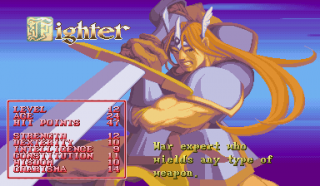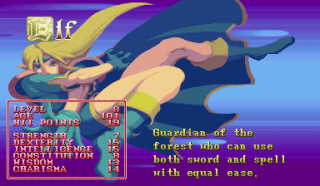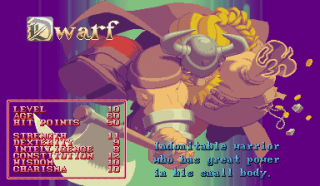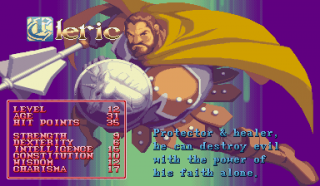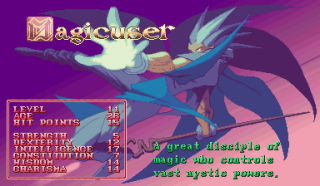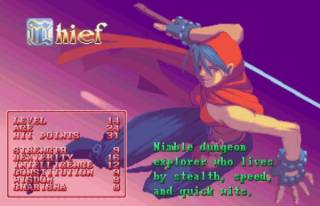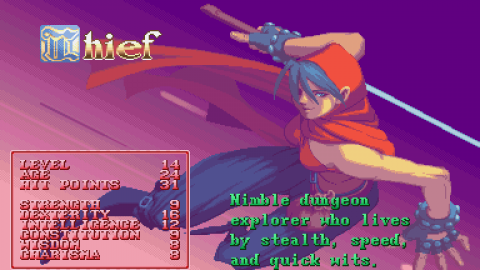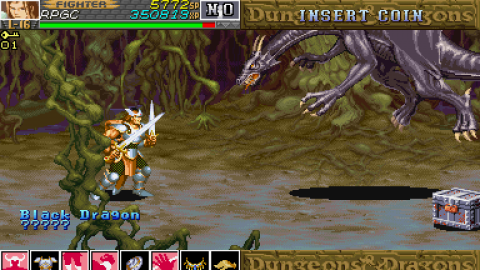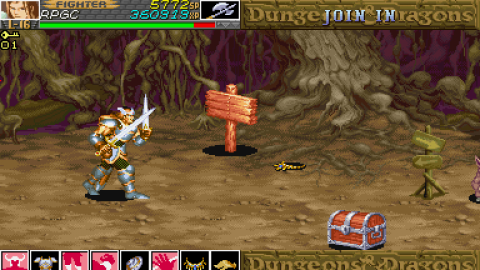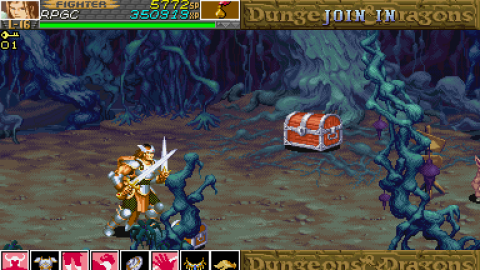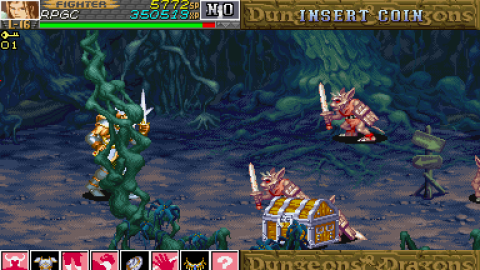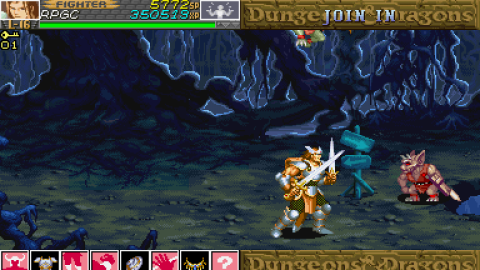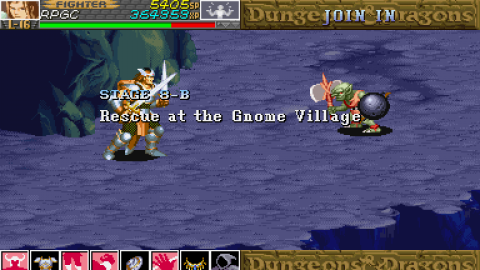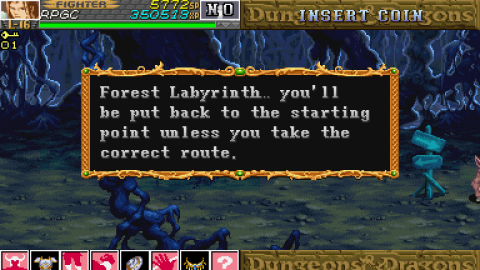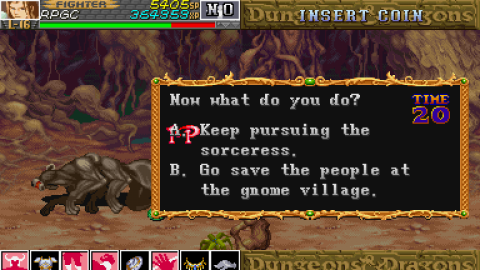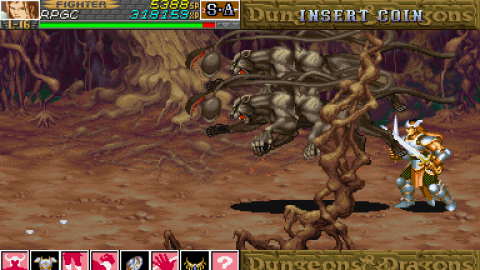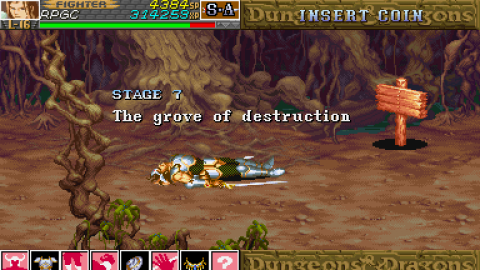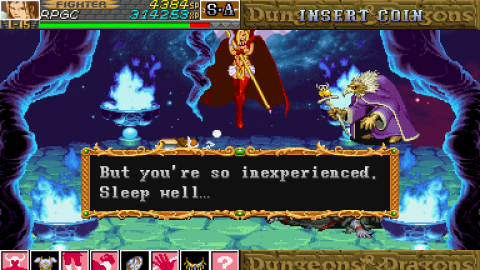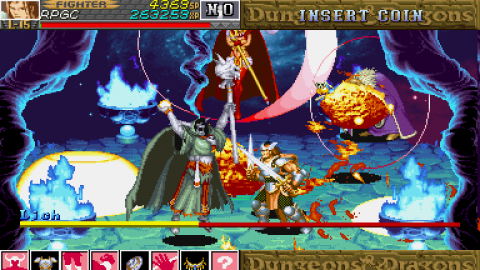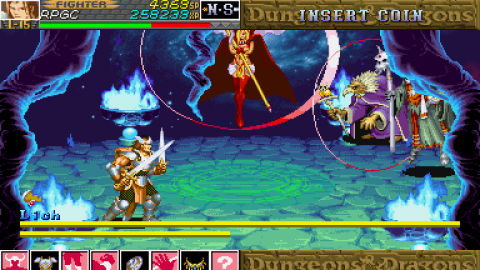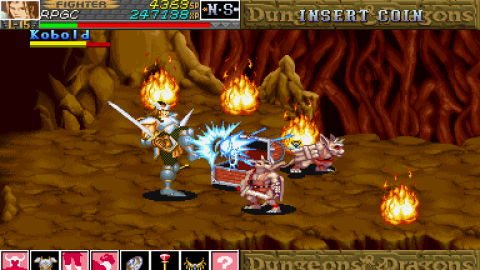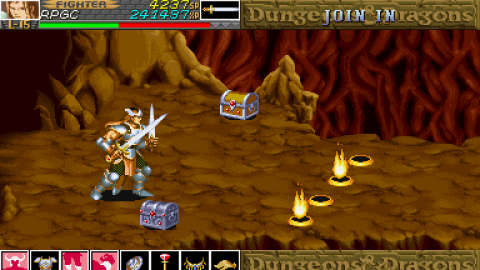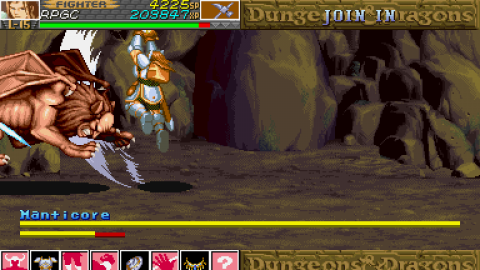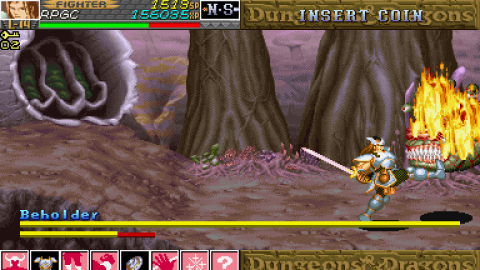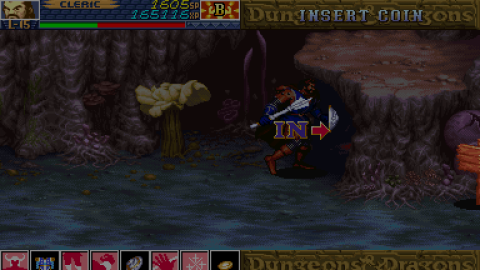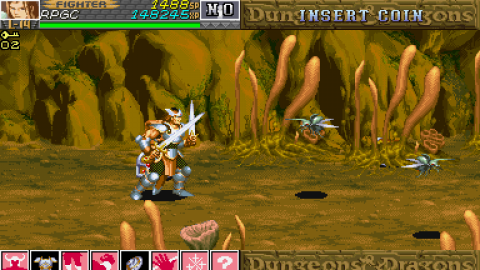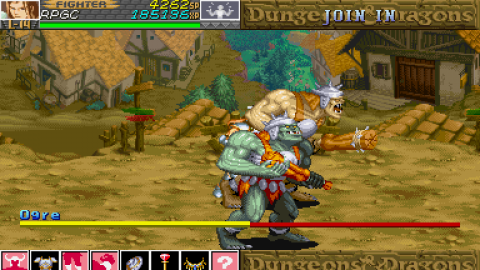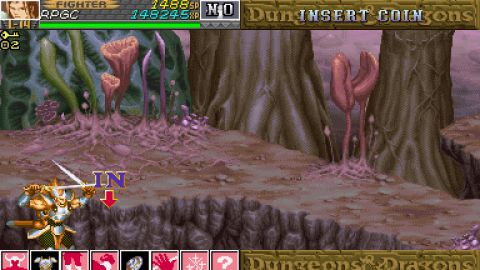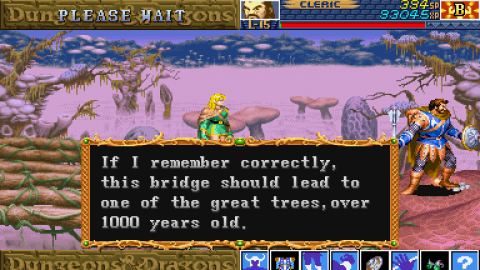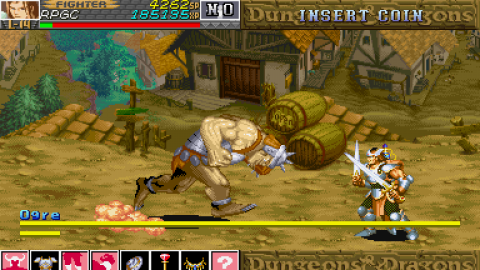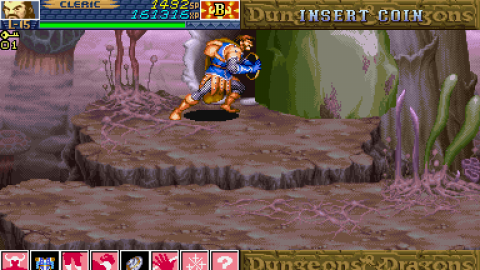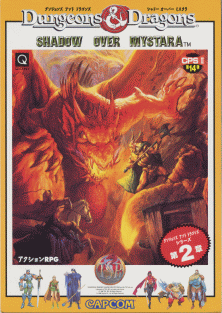Overview
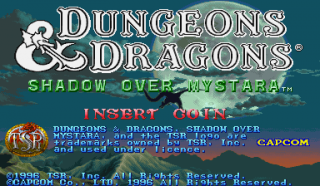
Dungeons & Dragons: Shadow Over Mystara was released in 1996 in the arcades as a sequel to Dungeons & Dragons: Tower of Doom, another beat-em-up developed and published by Capcom. Taking place in the Dungeons & Dragons universe, Shadow Over Mystara was similar to its predecessor in that it combined beat-em-up and role playing concepts. Additionally, Shadow Over Mystara was one of the last beat-em-ups that Capcom developed for the arcades.
Considered to be one of the best arcade beat-em-ups of its time, Shadow Over Mystara was praised by a variety of publications, including IGN and All Games Guide. The game was praised for being a considerable improvement over its predecessor, Tower of Doom.
Due to both Shadow Over Mystara and Tower of Doom's popularity, the two games were released as a compilation for the Sega Saturn in 1999, although this was only in Japan. This version of the game was only slightly different from the arcade counterpart, removing the four player aspect (reduced to two players simultaneously), as well as other minor changes in damage reduction and bug fixes.
Gameplay
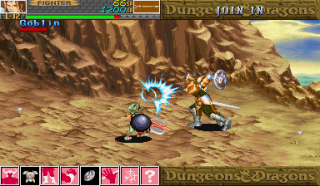
Shadow Over Mystara is a combination of the beat-em-up and role playing genres. Taking conventions from both genres, the game is, at its core, a side-scrolling beat-em-up. However, characters can level up, gain more strength, equip weapons and equipment, learn new spells, and purchase usable items such as potions and attack items. Additionally, the game includes a variety of branching pathways and multiple endings, depending on the character that is being played, as well as the choices that were made during the game.
During gameplay, players use a traditional four-button layout. Each button corresponds to a specific command; attacking, jumping, item selection, and item use. Attacking unleashes the characters default move, which does not use up any magic. However, entering in certain button combinations can have characters use special moves. These moves include a variety of special attacks, such as dashing forward and attacking, or even damaging all enemies within a certain radius--including the player character.
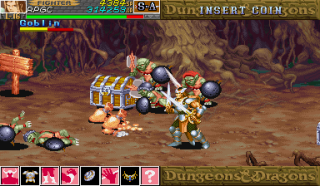
Using the attack button nearby treasure lying on the ground triggers the player character to pick it up, and action which can also be triggered by sliding (a feature lacking in Tower of Doom). Treasure can be obtained in a variety of ways, the most common being treasure dropped from enemies. However, treasure can also be found in chests, which are opened by attacking the chest. Chests can also contain traps, adding a degree of risk when opening a chest. Rare types of treasure can also be equipped on the player, such as boots (which add effects such as higher defense and faster walking speed), rings, helmets, shields, and gauntlets.
Jumping is a move which every character can do, however the jump button is also used in spell selection for the Magic-User, the Cleric, and the Elf. After opening the item selection menu, players can navigate to other spell menus by pressing the jump button. Item selection brings up a small ring that surrounds the character, and can be rotated through without pausing the game. This allows for players to equip new armor and use items while in battle. The ring selection menu is a new feature in Shadow Over Mystara; in Tower of Doom players activated a menu found at the bottom of the screen.
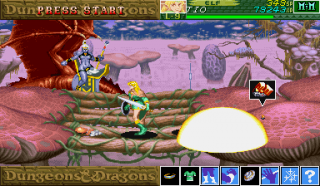
There are a variety of items and spells that can be used. Items include healing potions, arrows, hammers, throwing knives, and burning oil (the last of which has several varieties of size and the time for which it lasts). These items can be equipped by all characters, however spells can only be used by the Magic-User, the Elf, and the Cleric (the last of whom only uses support type magic). Unlike traditional role-playing games, Shadow Over Mystara doesn't use a magic meter or MP, rather giving each spell a number of uses. New spells can also be acquired through regular play by picking them up along with other treasures. These spells vary from screen-filling lightning bolts, to even temporarily controllable fireballs.
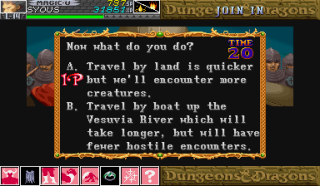
The role-playing aspects of Shadow Over Mystara extend to its branching pathways and non-playable character interaction. Before nearly every level, players are able to choose their next course of action, such as deciding whether or not to save a gnome village from a chimera. These choices factor into gameplay considerably, with some pathways giving less-than-desirable results (such as forcing players to fight a nearly undefeatable dragon). Additionally, any choices made during the game factor into the multiple endings, of which there are 20 (four for each character).
Non-playable character interaction is not as complex as a traditional console role-playing game, however this level of interaction is rare for an arcade game. Players are able to visit a shop after each level, where items can be bought and sold. Players can also interact with the shopkeeper, by speaking with them. Occasionally, the shopkeeper will give out a hint as to the player's next objective, or even provide some comic relief. Rarer items that can be obtained during boss battles can also be traded to shopkeepers by speaking with them, allowing players to obtain magical equipment and items.
The multiple endings of Shadow Over Mystara are based on a variety of factors. Each character has four separate endings that detail the character's adventures after Shadow Over Mystara. These factors include choices made during the game, money collected, who dealt the final blow on the boss, and even based on weapon held.
Characters
Gameplay centers around Shadow Over Mystara's six playable characters, each with unique strengths and weaknesses. These six characters are the Cleric, Dwarf, Elf, Fighter, Thief, and Magic-User. Unlike Tower of Doom, players can also choose to play as the same character, due to the fact that each character has a palette-swapped version of him or herself.

 Arcade
Arcade